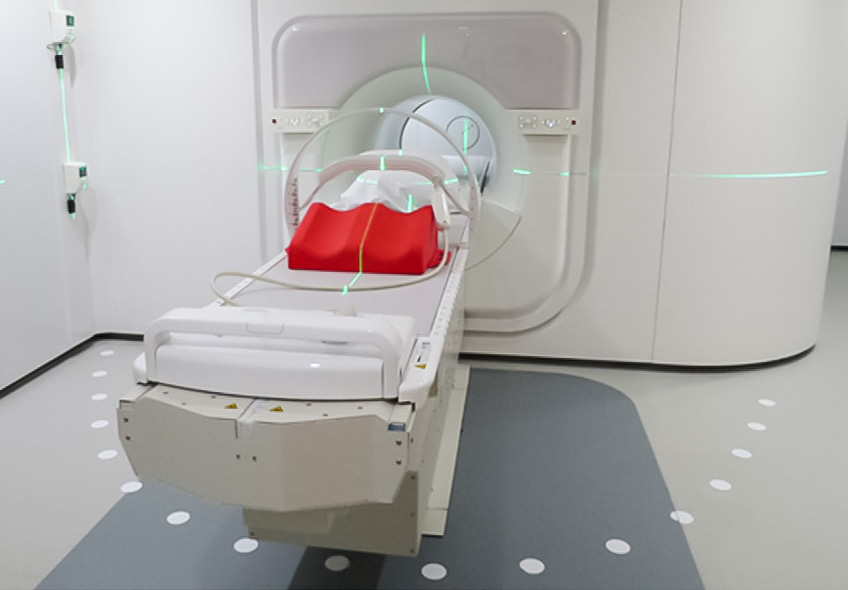MSc thesis project proposal
Active Noise Reduction for MRIs
Project outside the university
UMC UtrechtAim
Patients who undergo MRI scanning or are treated with radiotherapy on a MRLinac in a mask suffer from acoustic noise produced by the MR scanner. The aim is to reduce acoustic noise burden to the patient.
Introduction
MR imaging is an imaging technique that provides images with excellent soft tissue contrast and allows to create different contrasts by changing acquisition parameters. A well-recognized disadvantage of MR imaging is the acoustic noise produced by the fluctuating currents in the gradient system of the scanner required for the formation of an image in the MR scanner. The noise levels can go up to 130 dB SPL.
Background - mask in radiotherapy of head and neck cancer treatment
Patients with head and neck cancer and brain tumors receiving radiotherapy treatment are treated in a position mask, to immobilize their head during radiotherapy and enable reproducible patient set-up, which enables precision radiation by reducing the need for large uncertainty margins around target volumes.
Wearing these masks, it is not possible to use both in-ear hearing protection and on-ear ear muffs. The ear muffs do not occlude the ear well and have very limited added value when positioned in the mask. Besides, the ear muffs are large and radiation through the ear muffs is attenuated and can give a higher skin dose. Therefore, they cannot be used. While using only ear plugs as noise protection is adequate to reduce noise to limits below the level at which hearing damage might occur, it might not reduce noise sufficient for patient comfort and wellbeing during treatment and pretreatment imaging.
At the radiotherapy department a solution is needed in which noise reduction is sufficient and in which the delivered dose distribution is not hampered by the protection measures. At the same time, it would be valuable if patients can hear the instructions of the professionals at the bedside and via the speakers. Currently, this is solved by a sound system in the treatment room.
Noise canceling
Noise canceling can be approached form different sides:
1. Reduction of noise generated in the gradient coils by improving the design
2. Passive noise canceling
3. Active noise canceling
Assignment
Assignment
For this Msc graduation topic, the student is supposed to develop an active noise canceling system for MRI. Initially, a literature study is done on 1) MRI systems 2) noise cancelling methods 3) existing noise reduction methods for MRI. Subsequently, a noise reduction method is developed taking into account the tough constraints of the MRI equipment.
Institutes and people involved:
Marielle Philippens – UMCU (Department of Radiotherapy)
Rob Remis and Richard C. Hendriks – TUDelft EEMCS (Circuits and Systems Group)
Contact
dr.ir. Richard Hendriks
Signal Processing Systems Group
Department of Microelectronics
Last modified: 2022-05-09
